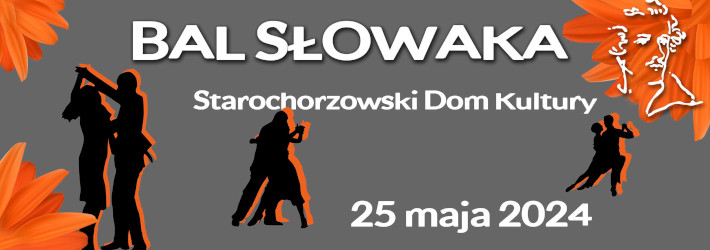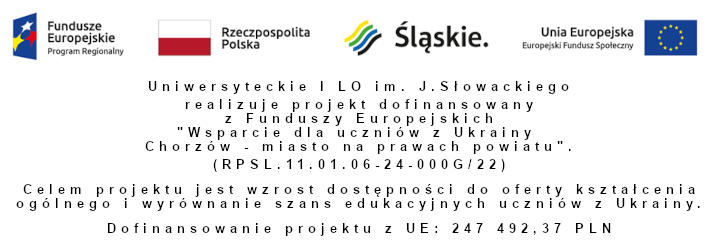Diary from the trip to the USA 2016
Day 1
We left home at 3 and went to the centre of Katowice where we had an assembly. At 4 we were already on the buses and we started our adventure!
We reached Chopin’s airport and we had about 5 hours to stretch our legs.
The flight to London Heathrow was at 11.50. I phoned my family and friends. While sitting in the departure room the English man had taken my attention. He was advanced in years and he looked like a typical English. His voice was just perfect. Imagine that he sit next to me on the plane! I asked him a question about the newspaper that he was reading. It was the Guardian and BBC page.
Heathrow is the largest airport in Europe. It’s 20 km off the city centre. While the plane is circling you can see the whole London.
At Heathrow we transferred to the flight to Los Angeles. We didn’t have much time and the security check was very accurate. It was the first time I had been on such a large plane. It’s the largest passenger plane that can contains 850 people. I tried not to sleep during the flight because there were so many amazing films. I watched Alvin and Chimpmunks, The Diary of Bridget Jones and Ratatouille in French. Then I turned on the audiobook about Los Angeles city. Although It was extremely interesting I fell asleep.
We arrived at LAX airport at 7.20 pm. It’s the sixth most populous aiport in the world and at the same time very modern. We needed to pass through the security control and the police officer checked our visas. Thereafter, Mr Dubiel picked our luggages up and we got to the car rental by shuttle bus. The moment when we left the airport was truly amazing! I felt like I’m in the utterly different world. We got to the hotel in Ingelwood, LA.
Day 2
Los Angeles is the second largest city in the United States frequently the most populous city is the state of California. It’s often known as the most filmed city in the world.
After breakfast, that consisted of cereals and a bun, we went to the Universal Studios. On that day there were 3 thousand people. There were loads of attractions that were connected to various films. In my oppinion the best was Jurassic Park! Because of the thrilling river raft. I went to the tour through the history of films and we saw how they film. It was 106oF.
Next the proffesors picked us up and we went direct to the Venice, the neighborhoods of LA. It’s known for its canals and beaches and the circus-like Ocean Front walk, a two-and-a-half-mile pedestrian-only promenade that features performers, mystics, artists and vendors.
Honestly, I consider it to be the most beautiful district of LA. There we could feel the living city. We ate there the best hamburgers in the whole city! We stayed on the beach till the sunset.
Day 3
We left Los Angeles and headed for Joshua Tree National Park. It covers an area slightly larger than the state of Rhode Island. The park is named by Mormons after the Joshua trees that are belived to be the most weird trees in the world. The park wasn’t very popular by the time U2 released their album named Joshua Tree in 1987. We took a walk through rockes where we climed on some. We slept in Kingman in Arizona near Route 66. In the late evening after arriving at the hotel we jumped into the swimming pool.
CALIFORNIA
It’s the most populous state and the richest one in the US. It is bordered by the other U.S. states of Oregon to the north, Nevada to the east, and Arizona to the southeast. Sacramento is its capital city.
ARIZONA
It is the sixth largest. Its capital and largest city is Phoenix. It borders with New Mexico, Utah, Nevada, California, and Mexico. The symbol of this state is a Saguaro cactus that can be 21m tall and is native to the Sonoran Desert in Arizona.
Day 4
Firstly we went to the Hualapai indian’s reservation. The name means “people of the tall trees”. Their traditional territory is a 108-mile (174 km) stretch along the pine-clad southern side of the Grand Canyon and the Colorado River with the tribal capital located at Peach Springs.
Generally, we spent that day travelling through the cities from “The Cars” movie.
The Seligman was on the original U.S. Route till 1978, when Interstate 40 bypassed it a couple miles south. Seligman experienced its real heyday after World War II, when returning veterans and other motorists hit the road and made the Southwest a popular tourist destination.
There probably wouldn’t be a Route 66 as we know it today if it were not for one man–Angel Delgadillo, the barber from Seligman. He went on to find the Historic Route 66 Association of Arizona. Eventually, route 66 associations were found in all eight US 66 states with a similar goal: preserving the once-important road.
Route 66, often known as a Main Street of America or the Mother Road, was established in 1926. The most famous road which ran from Chicago to Los Angeles covered nearly 4 thousand km. It was officially removed from the United States Highway System in 1985 after it had been replaced in its entirety by segments of the Interstate Highway System
Afterwards, we went to the Petrified Forest National Park, named for its large deposits of petrified wood. The Petrified Forest is known for its fossils, especially fallen trees that lived in the Late Triassic Period, about 225 million years ago.
We slept in Winslow.
Day 5
We left motel early and went to La Posada Hotel, a gorgeous train station in Winslow. We took a walk through that precious town and ended in the place where a guy from The Eagles after he had seen a woman wrote a song „Standing on the corner”. There was no band in the U.S. that sold as many CD’s as The Eagles.
Then we stopped to see Sunset Crater (Flagstaff). The crater is within the Sunset Crater Volcano National Monument.
And then we got to the GRAND CANYON! I consider it to be the most beautiful place in the world. It is a steep- sided canyon carved by the Colorado River. The Grand Canyon is 446 km long, up to 29 km wide and attains a depth of over 1,857 meters. Vicky said that she felt as if she had been a Goodness. To be honest it’s charming and no one can imagine its real size.
We took a walk along the brink. On our way to the motel we stopped to see Navajo bridge on the Colorado River.
Day 6
We explored the Antelope Canyon which is a slot canyon. It’s located on Navajo land east of Page. The Navajo name for Upper Antelope Canyon is ”the p;ace where water runs through rocks”.
Antelope Canyon was formed by erosion of Sandstone, primarily due to flooding and secondarily dur to other sub – aerial processes. Over time the passageways eroded away, making the corridors deeper and smoothing hard edges in such way as to form characteristic ‘flowing’ shapes in the rocks.
This is a stunning place because of the beams of lights and beautiful colours of the rocks.
We also saw The Glen Canyon which is the second biggest canyon and it was flooded by the Lake Powell.
We went for a walk to see The Horseshoe bend that lasted not much time but it was 1140F! There were rangers that warned us to take enough water. It’s a horseshoe – shaped meander of the Colorado River. Then we drove to Utah. Approximately 62% of Utahns are reported to be members of The Church of Jesus Christ of Latter – day Saints (Mormons). We got to Monument Valley. It’s chracterized by a cluster of vast sandstone buttes, teh largest reaching 1,000 ft. It has been featured in many forms of media since the 1930s. While driving we put our heads off the car and we drove screaming.
Having left it we stopped on the road to take sme photos in the place where Forrest Gumo run. Our professors found the Goosenecks National Park, overlooking a deep meander of the San Juan River.
Day 7
After we had left a pretty nice city of Moab we went to the Arches National Park. This park is well- known for about 2 thousand natural sandstone arches. However, in the whole world there are 3,5 thousand arches.
We parked our cars, washed faces to feel a little bit cooler and started our walk. The first stop was to see the Landscape Arch which is the fifth longest arch in the world measuring 88 meters. The walk lasted nearly 4 hours and it was great because we could walk on the rocks having abyss next to us. Imagine that this park receives only 250 mm (10 inches) of rain a year on average.
Having finished we drove to the place where we started a walk to see the most famous arch. Honestly, it was demanding because of the heat, no shade and the trail that was supposed to go up. It looked like a small mountain. It lasted more than an hour to reach the top but because of the extra heat it seemed to be much longer. Without no doubt it was worth it. The Delicate Arch was absolutely amazing! When we walked down I met a nice woman who lives in Florida. She was really friendly and I talked to her for 10 minutes. She told me that it was cold for her although it was 100oF (but Florida is much warmer).
Despite the heat everyone really enjoyed it!
Day 8
We left Moab and went to the Canyonlands National Park. It preserves a colourful landscape eroded into countless canyons, mesas, and buttes by the Colorado River, the Green River, and their respective tributaries. We took a short hike to see the spectacular view of Messa Arch. Then we went to hike to the Island in the sky where we could see a gorgeous landscape.
On our way back we drove to see The Natural Bridges National Monument. It features the thirteenth largest natural bridge in the world. A natural bridge is formed through erosion by water flowing in the stream bed of the canyon.
We stopped to take photos of the bridge on the Colorado River and to see The Lake Powell.
Day 9
We left Torrey after having eaten a delicious breakfast! It contained so many things like for instance toasts, eggs, yoghurts, cereals, porridge. One man once told me that American children take toasts with peanut butter and their favorite jam to school. I tasted it too.
We went to the Capitol Reef National Park and on the way there we saw buffalos.
The local word reef refers to any rocky barrier to land travel, just as ocean reefs are barriers to sea travel. The Park was designed in order to protect the area’s colourful canyons, ridges, buttes, and monoliths.
Firstly we drove along the marvelous sandy road like for off road cars. There we took a hike- 3 hour walk to the Cassidy Arch. We needed to gain nearly 1,000 feet of elevation to reach the arch. Even though It was a little strenuous, the view from the top was breathtaking.
Later we dropped into the shop where we could have a rest and eat something. There we could also try some local made food for instance- pineapple and apricot jam!
Day 10
On that day we visited Bryce Canyon National Park. . Ebenezer Bryce, for whom the park was named, reportedly described his canyon as a “hell of a place to lose a cow”.
Bryce is distinctive due to geological structures called hoodoos, formed by frost weathering and stream erosion of the river and lake bed sedimentary rocks. The red, orange, and white colors of the rocks provide spectacular views for park visitors.
The first stop was on the Sunset point and that is from where we started our hike down the canyon. The trail that we walked on was called Wall Street.
Bryce Canyon is unimaginable. It’s enourmous how it could be created. Colours are also its beauty. Through the orange rocks you can see the large trees such as firs. My mum loves that place.
Next we stopped on the Sunrise point.
Outside the motel room we had our cars parked and there were also some chairs so we went out. The whole motel was very beautiful because it looked like from the old moves.
Day 11
We left early and went direct to junkyard. We wanted to take some plates but there was no one there. However, every cloud’s got a silver linning. We saw loads of cult cars.
Then we drove to the Zion national Park. The park’s unique geography and variety of life zones allow for unusual plant and animal diversity. There are numerous plant species as well as 289 species of birds, 75 mammals and 32 reptiles inhabit the park’s four life zones: desert, riparian, woodland, and coniferous forest. The Zion National Park includes mountains, canyons, buttes, mesas, monoliths, rivers, slot canyons, and natural arches.
We crossed the part of the park by car and came to Hurricane city. Everyone was looking forward to eat in a Chinese restaurant but firstly we dropped into a Second Hand Shop. There were so many antiques and loads of books.
Soon after we went to eat a meal. We could eat as much as we could and it was extremely delicious!
On our way to the motel in St. George we stopped in Birgham Young, the first Mormon, house. A very nice lady guided us through that place.
Day 12
We left St. George and went to the Zion National Park. The professors told us that we would be exploring that park by river. We jumped into a shuttle bus that took us a little bit higher. Never had I seen so many squirrels as there. We needed to walk for a few minutes and then went to the Virgin River. The Virgin River is a tributary of the Colorado River in the states of Utah, Nevada and Arizona. The river is about 162 miles (261 km) long. The temperature of water was about 17oC and the water had a crystalline colour. This canyon was magic and the views from down were unbelievable. This gorge has walls a thousand feet tall. After 1 and a half hour we took a break and started to come back. Then nearly everyone of us started to swim! Mr. Dubiel found a place where we could jump from the rock! This jump was unforgettable!
Day 13
We went to the Valley of Fire and that was the last time we could walk on the rocks during that trip. The Valley of Fire State Park is the oldest state park in Nevada. It derives its name from red sandstone formations, the Aztec Sandstone, which were formed from great shifting sand dunes during the age of dinosaurs. We could climb on the rock that looked like an elephant. The best thing was not only an elephant but the view from it.
Later we stopped to see Hoover Dam. The dam’s generators provide power for public and private utilities in Nevada, Arizona, and California. It was opened in 1936 by President Franklin D. Roosevelt. The dam is placed on the border between the U.S. states of Nevada and Arizona.
Then we drove to Nevada.
Nevada is the 7th most extensive state. Nearly three-quarters of Nevada’s people live in Clark County, which contains the Las Vegas–Paradise metropolitan area. The capital city is Carson City. This state is officially known as the ”Silver State” due to the importance of silver to its history and economy. It’s also known as the ”Battle Born State” because it achieved statehood during the Civil War. Nevada borders Oregon to the northwest, Idaho to the northeast, California to the west, Arizona to the southeast and Utah to the east.
In the suburbs of Vegas we went for shopping in the outlets. It took us about 5 hours!
Then we checked in the Stratosphere Hotel. In the evening we left the hotel and walked through the city of Las Vegas. Las Vegas is an internationally renowned major resort city known primarily for gambling, shopping, fine dining, and nightlife. There are about 105 casinos. This city takes more than 60% of water of the state.
Firstly we saw Venice. Then we could admire a magnificent fountains in front of the Belaggio Hotel. Next stops were in front of The Eiffel Tower, The Statue of Independence, Caesars Palace, Walt Disney castle and Sphinx.
We also had an opportunity to gamble. The city made a good impression upon me. Everything was lightened! The music was loud and there were loads of people who were having fun.
At about 2 am we came back to the Hotel.
Day 14
We ate breakfast in a nearby restaurant. We set off to the Death Valley, a desert valley located in Eastern California. We stopped on Borax Mining point and then in Badwater Basin, the lowest point in the Western Hemisphere (85,5 meters below sea level). Death Valley holds the record for the highest reliably recorded air temperature in the world- 134oF which was 57 oC. On that day there was 1190F so it was 48oC.
Then we went to the City of Los Angeles, the second largest city in the U.S. The City of Angeles is a global city with a diverse economy in entertainment, culture, media, fashion, science, sports, technology, education. The city council consists of 15 members.
Firstly, we explored The China Town. This district is a unique mix of tradition and revitalization. The landmark district has dining and shopping options both old and new, all set against a historic backdrop. We visited the Taoist temple.
After visiting the Union railway station which is one of the largest station in the U.S. we explored Downtown. We walked through Olvera Street, the oldest part of Downtown. It was very pretty especially because of the mall market.
Then we took a walk in the Financial District, through enormous bulidings! We even jumped into the Central Library, with more than six million volumes. It serves the largest population of any publicly funded library system in the United States.
On our way to the car we saw the stunning Walt Disney Concert Hall. It is an internationally recognized architectural landmark and one of the most acoustically sophisticated concert halls in the world. Built in 2003 can cointain 2300 people.
And then we drove to Hollywood, the “Entertainment Capital of the World.” It’s also known as a Tinseltown. We strolled on the Walk of Fame. It comprises more than 2,500 stars.
Then we stopped to see TCL Chinese Theatre Stock where famous actors and actresses handprints are located.
The Dolby Theatre (formerly known as the Kodak Theatre, the theater has hosted the Academy Awards ceremonies (the Oscars). We went into and saw the the Hollywood sign. It’s located Mount Lee. In the end we walked on the stairs were red carpet lies during the Academy Awards ceremonies.
Professors gave us some hours to buy some souvenirs and walk again through Hollywood Boulevard.
Soonafter, we drove through Griffith Park, a large municipal park at the eastern end of the Santa Monica Mountains. It is the second-largest city park in California. It has also been referred to as the Central Park of Los Angeles but is much larger, more untamed, and rugged than its New York City counterpart.
And we drove through the Beverly Hills, a prosperous city located in the Los Angeles County.
Beverly Hills is known worldwide as a premier destination for luxury.
On our way back to the motel we stopped in Santa Monica. National Geographic named it as a one of the Top 10 Beach Cities in the World. Santa Monica is one of L.A.’s most popular destinations for domestic and international visitors alike. The iconic Santa Monica Pier is a must-see, featuring an amusement park and historic carousel. This is also a place where the historic Route 66 ends. We spent a great evening on the beach and some of our students swam in the Pacific Ocean. We came back to Inglewood.
Day 15
The last day
We woke up early as we had a flight at 12.45. A shuttle bus picked us up from the car rental. We had an opportunity to see how big was that airport. And then our luggages were dropped off and we were placed on a plane to Denver, Colorado. This is the largest airport in the United States by total land area. In Denver we had 3 hour break because the flight to London Heathrow was at 11.35. The plane was a little bit smaller than it was on our way to U.S but the staff and films were perfect. We landed in Heathrow and we saw that our flight to Warsaw had been delayed. Luckily we caught a train in Warsaw and at about 10 p.m. we were in Katowice. Our families greeted us lovingly and everyone of us said goodbye to one another.
To sum up…
I’d like to add that it was an extremely prodigious experience to be there! It’s just unbelivable how much we could see thanks to our professors. They showed us everything that was to be seen and even more. We covered 5,500 kilometers within 16 days. Every single day, was truly amazing and full of adventures. The West Coast was better as we could ever imagine. I have to mention that we, students could feel good in our company. We will always remember these days. It was a dream come true expedition and we were lucky to be on that trip.
Thanks to everyone
Marta Fabjańska







